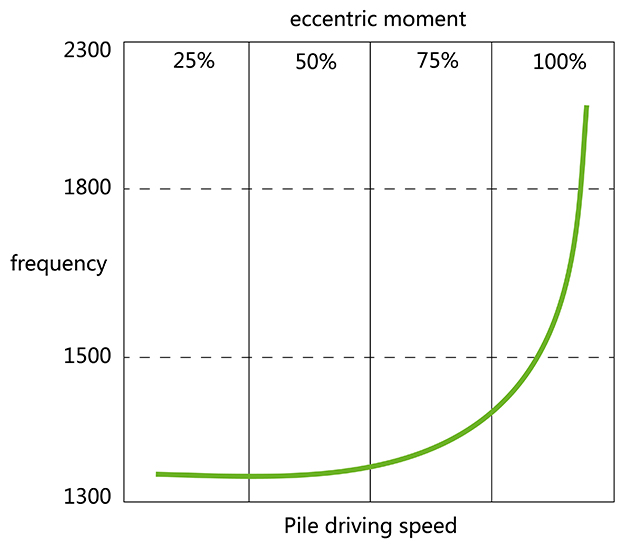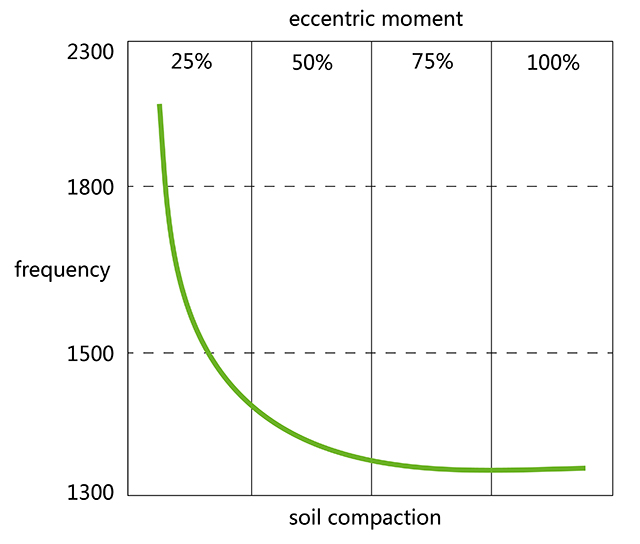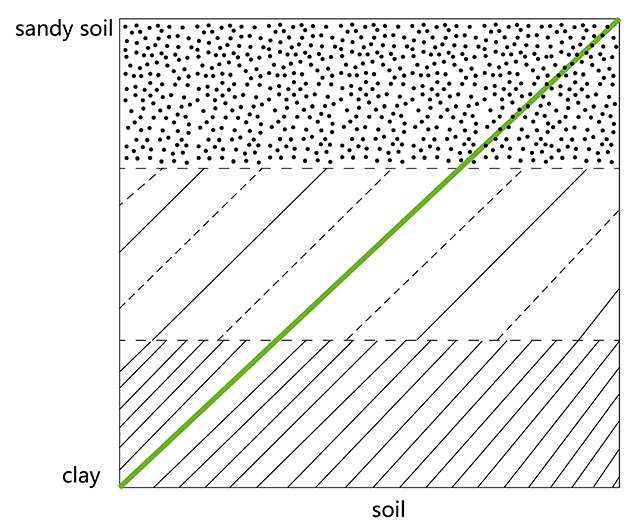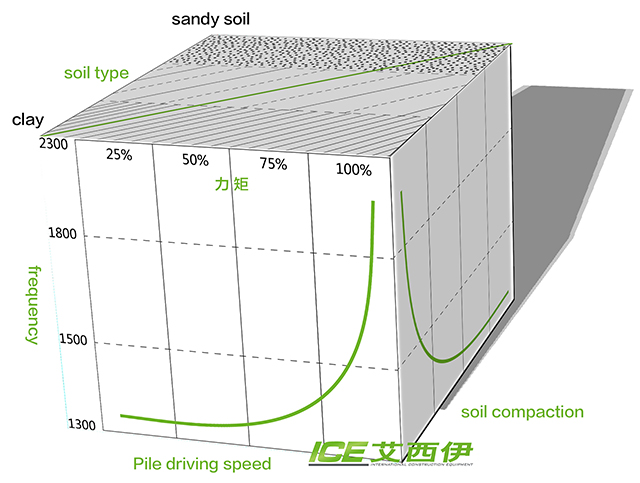Frequency controlled piling methods have shown to increase the bearing capacity of a steel foundation pile, especially in sandy soil layers. In this article we will discuss how the reaching of the specified bearing capacity of vibrated piles can be quickened.



Steel friction piles for elevated highway foundation have been successfully installed by resonance free vibratory hammer. The working principle of the vibro hammer is that vibrations liquify the soil allowing the pile to be inserted in the soil under its self-weight; when the vibrations stop the soil returns to its stable state. Static load measurements have proven the foundations to meet the design standard typically within 30 days. In some areas in Shanghai’s Pudong New Area the soil is a bit more sandy and the bearing capacity of the pile needs more time to meet the design requirement (up to 90 days in one extreme case). To reduce the 90-day period the piling method used needs to be tweaked a bit to help the soil return to its original stable state faster. This can be achieved by adjusting the rpm of the eccentric weights (1250-2300 rpm) and by varying the moment of the eccentric weights (25-100%) inside the vibratory hammer’s gear case.

Think of it as changing gears in a car. Different settings are needed when going up a mountain road then when driving on the highway. A hammer that offers a variable moment offers the operator two variables: rpm and moment, different combinations of these will influence the performance of the hammer and the impact on the soil. On an ICE hammer these two parameters are controlled by remote control, the rpm is displayed in the remote’s display window.
A lot of people know from practical experience that in sandy soils the longer you drive with a low frequency hammer (for example an electric vibratory hammer that has an rpm below 1000), the compacter the soil will become. So, the construction team’s focus should not just be on installation speed but also on the compaction side effects of pile driving.

The above diagram gives guidance to set up a piling protocol for different soil types and objectives (i.e. faster driving, or greater soil densification).
So how could you do achieve densification/ increased bearing capacity using ICE RF equipment without creating resonance into the environment. Follow these steps:
* Don’t focus only on installation speed. Driving the pile at a slower, controlled speed will under some soil conditions increase the bearing capacity of the pile.
* For the last few meters of pile driving increase the amplitude by reducing the frequency of the hammer by remote control. As long as you keep the hammer operating above 1250 rpm you will avoid resonance into the soil. Vibration monitoring devices can be used to provide real-time information to the operator.
Other ways to increase bearing capacity
* Adding obstructions inside the pile, this creates a soil plug which can add bearing capacity but will be hard to control. It is not advised as the pile can hit a stone, a piece of wood, or other debris that stops all soil from entering the center of the pile leading to refusal.
* Adding fins to the side to increase the surface area, this has not shown much evidence of increase the bearing capacity of the pile.
This is an interesting field for further research, and we recommend smart minds to work on this field. We welcome questions from design institutes and project owners. Our service team is available to help train your operator team to use the hammer in this way. Another great reason to choose equipment from ICE!
A large-scale test in Germany showed that out of three test piles, the pile with the longest vibro driving had the highest bearing capacity
Some sources:
1)Cuxhaven report
2)Massarsch, K. Rainer. (2017). Recent developments in vibratory driving and soil compaction.
3)Geotechnical Engineering Journal of the SEAGS & AGSSEA, Monitoring and Process Control of Vibratory Driving, K. R. Massarsch and C. Wersäll, 2004
RESONANCE FREE VIBRATING CONCEPT for reference
